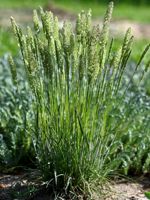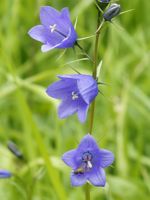Mon-Fri 9am - 5pm Mountain time
Junegrass vs Harebell
Koeleria macrantha
Campanula rotundifolia
NOT AVAILABLE THIS SEASON - MIGHT RETURN
NOT AVAILABLE THIS SEASON - MIGHT RETURN
Junegrass is a native, low-growing perennial bunchgrass commonly found in prairies and open woodlands. It is a great choice for prairie restoration and naturalization projects or an attractive accent in ornamental plantings. Spear-shaped seed heads rise above the gray-green lower leaves, maturing to a tan color. Flowering earlier than other upright prairie grasses, it greens up quickly in spring and maintains its appeal well into the fall. It is shorter in stature and rarely forms thick stands, which adds to its understated visual appeal.
Adapted to cooler climates, Junegrass thrives in well-drained, rocky, sandy, or gritty soils and can tolerate drought, cold, and high altitudes. It actively grows in spring and fall when soil temperatures are cool, but in areas that are too hot or humid, it may go dormant by late summer.
As a perennial, it dies back to the crown each winter, it will regrow from the base in the spring. Avoid disturbing the crown during late winter to ensure healthy growth the following season.
Harebell is a native perennial wildflower known for its bell-shaped, blue-violet flowers. The noddling blooms occur in clusters at the top of slender stems. Blooming in bursts from summer to fall, the flowers attract pollinators such as butterflies, bees, and hummingbirds.
Regular deadheading encourages additional blooms, extending its floral display through the season. Harebell prefers areas with cooler summer climates and does poorly in those that get too hot and humid. It is well suited for native wildflower gardens, pollinator gardens, and naturalization projects.

